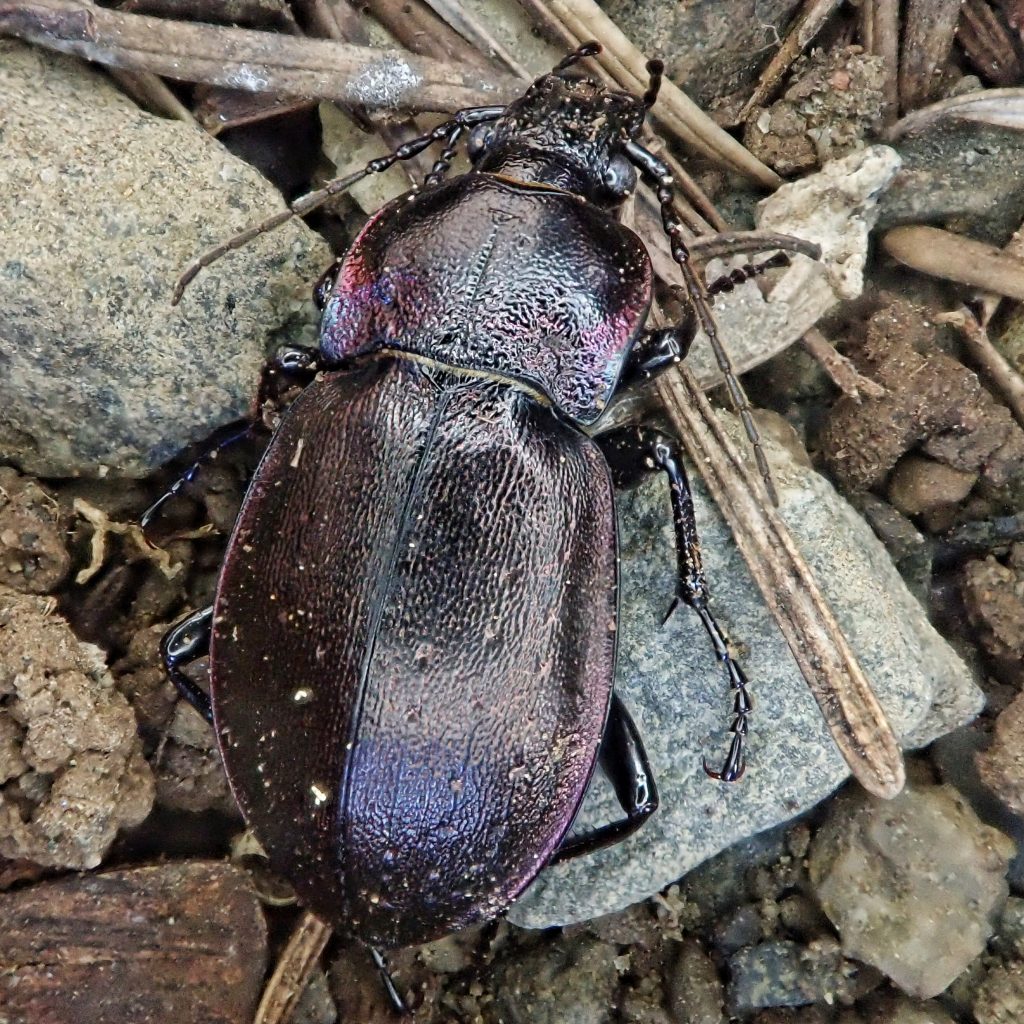
I love flipping a log or rock and finding these large beetles in the family Carabidae (which are also sometimes called Bronzed Carabids). They aren’t the only large beetle I ever find, but I see as many Carabus nemoralis as all of the other big beetles (I define big as more than, or nearly, an inch in length) combined. As is obvious from their common name of European Ground Beetle, this is not a native species, but they’ve been in North America for at least 150 years.
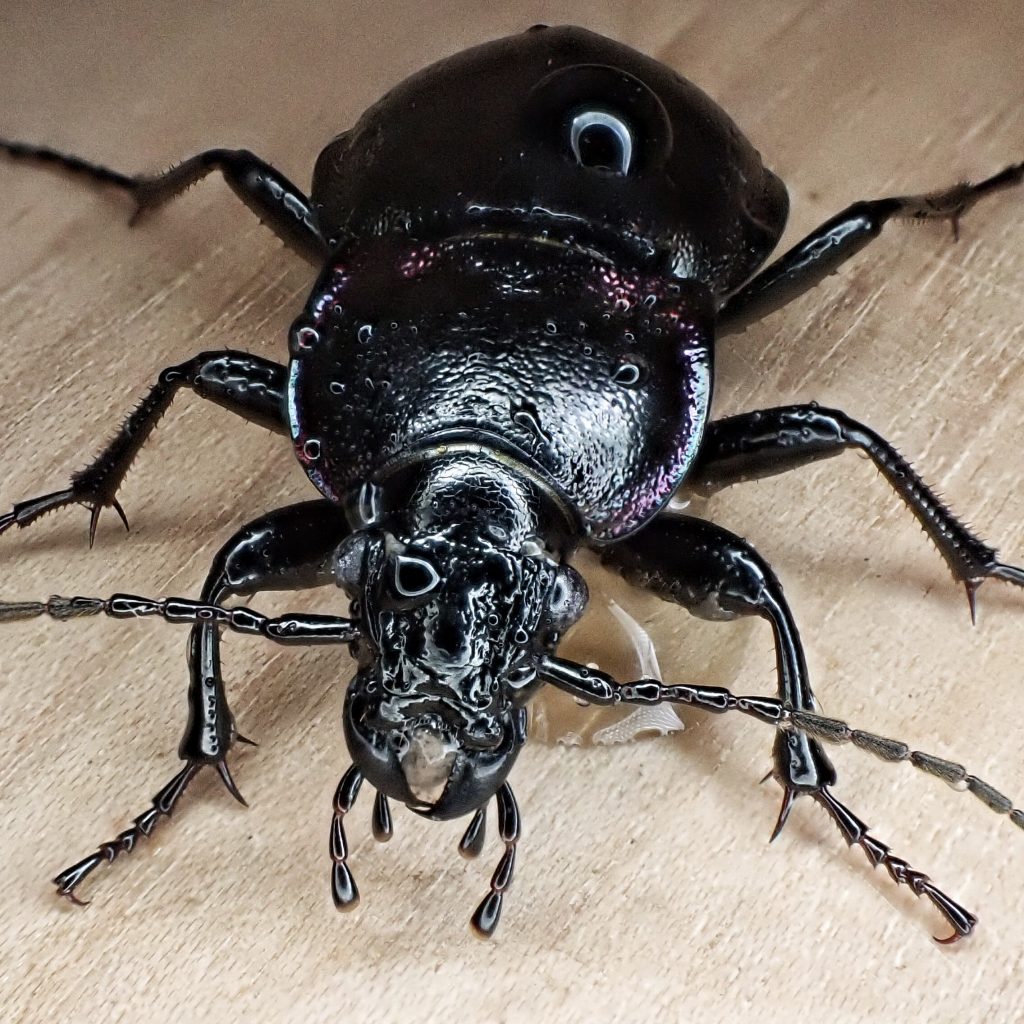
It is hard to quantify the impact of Carabus nemoralis on the numbers of the large native carabids in our region, although they do seem to be in decline. C. nemoralis is definitely the most prevalent large carabid around human population centers, but whether that is because they outcompete the natives, or simply adapt better to, and thrive in, areas of anthropogenic disturbance is unknown. Even in their native lands they are synanthropic, and have readily exploited gardens and less manicured disturbed grounds.
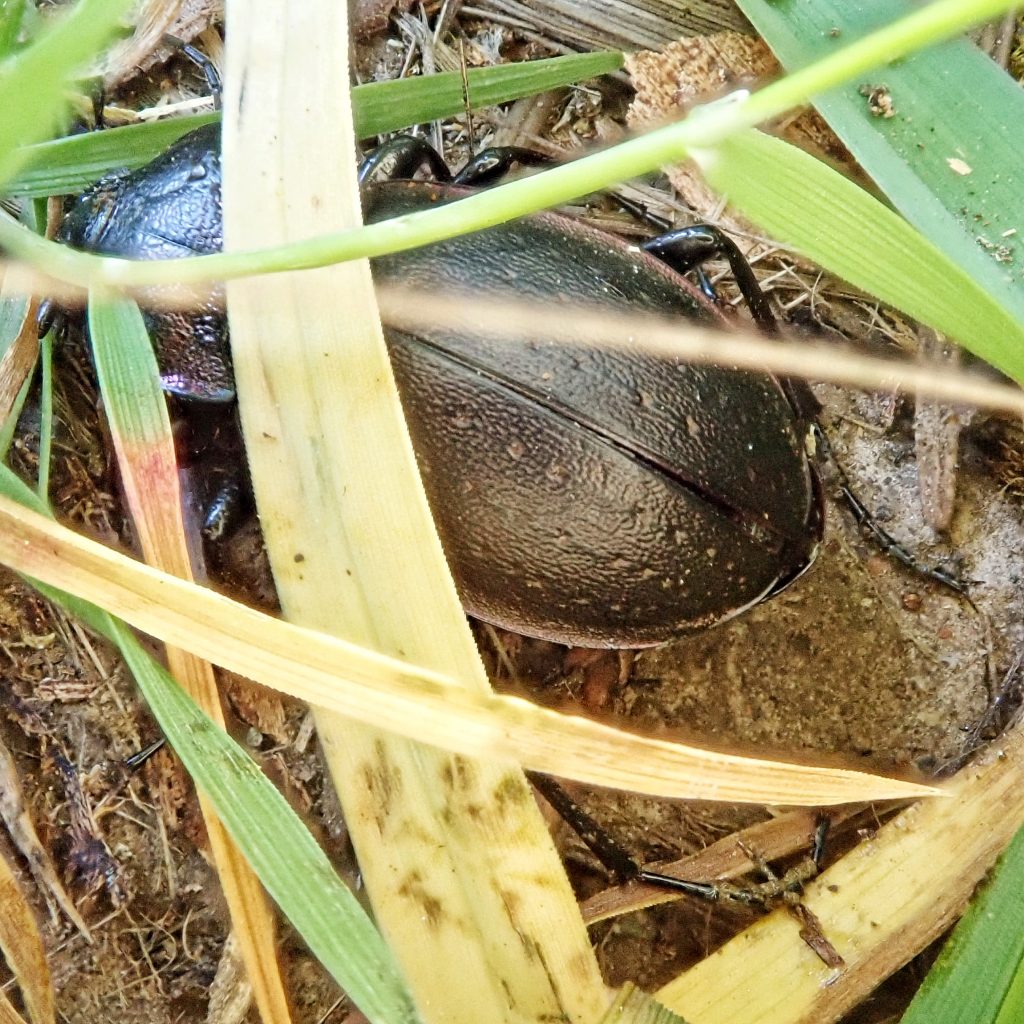
In the relative absence of large native carabids these big Carabus nemoralis are a real friend to gardeners of all stripes, since they and their larvae target mostly soft bodied invertebrates, particularly slugs and lepidoptera larvae, including many of the cutworms. It is interesting to note that Carabus nemoralis seems to follow the slime trails of slugs and earthworms while hunting, although the males no longer track slugs after mid spring, a time which correlates to the end of mating season. However females continued to orient to the mucus trails of both worms and slugs until their summer dormancy, which also corresponds to the end of oviposition of eggs.
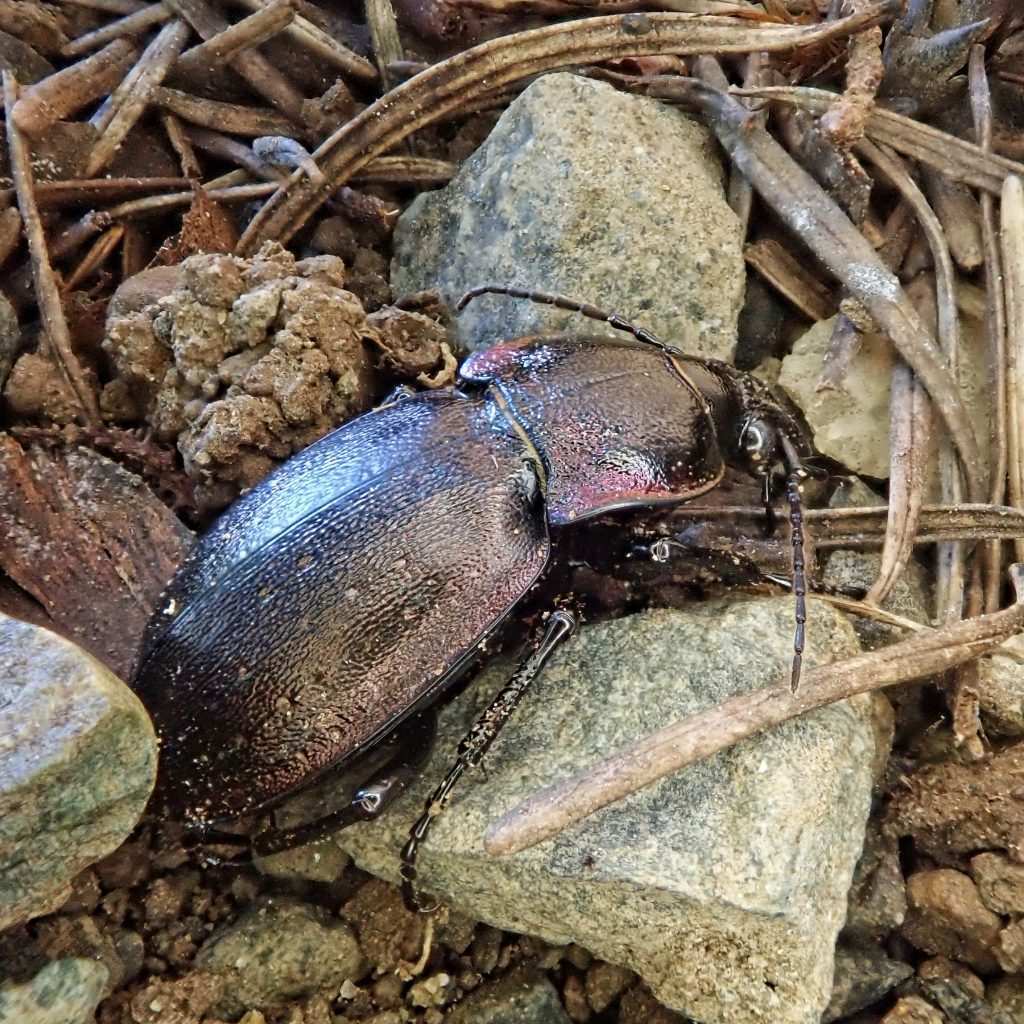
So it would seem that slugs may convey some reproductive advantages over earthworms as dietary items, although it may be that they are just more abundant and/or easier to catch, and that a low quality dinner is better than no dinner at all. And going after soft bodied animals is certainly not because they can’t subdue other prey. Larochelle & Lariviere (A Natural History of the Ground Beetles [Coleoptera: Carabidae] of America North of Mexico; 2003) report an adult Carabus nemoralis eating a small snake!
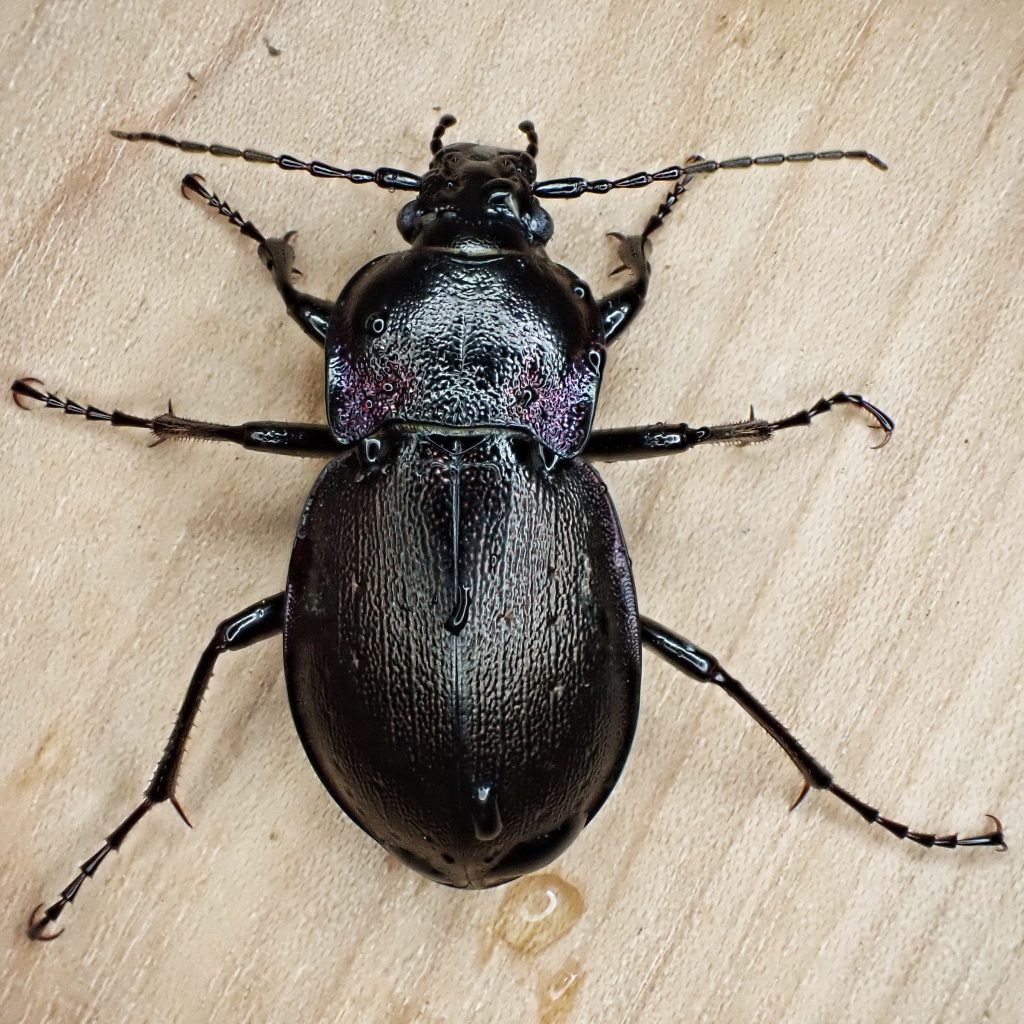
Description-Large (20-26mm), stocky, black or dark brown beetle with purplish iridescence at pronotum corners and elytral margins; elytral field has subtle bronze iridescence; rows of small divots in wide elytra, but lacks strong grooves; pronotum domed, margins plane, rear corners tilt upward; sides of pronotum more or less parallel.
Similar species–Carabus taedatus lacks iridescence; Carabus serratus is smaller, with bumps on the sculptured elytra; Calosoma tepidum pronotum narrows at rear; Calasoma calidum and C. frigidum have grooved elytra.
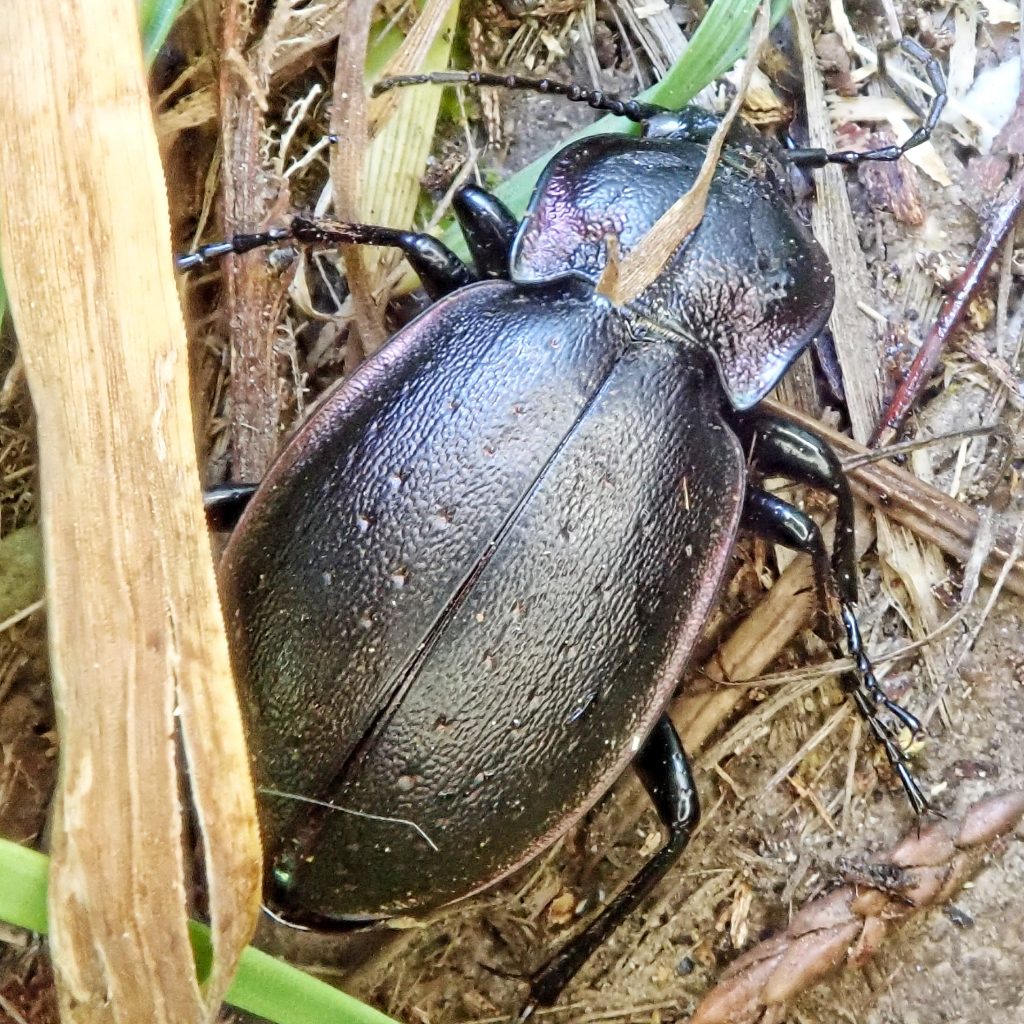
Habitat-Synanthropic; found under boards, pavers, logs, and other cover in parks, cemeteries, around houses; seems to be spreading beyond just the outskirts of urban areas, where it is often found in leaf litter.
Range-Native to Europe, introduced in North America but absent from the Great Plains; found region wide in the PNW in appropriate habitat.
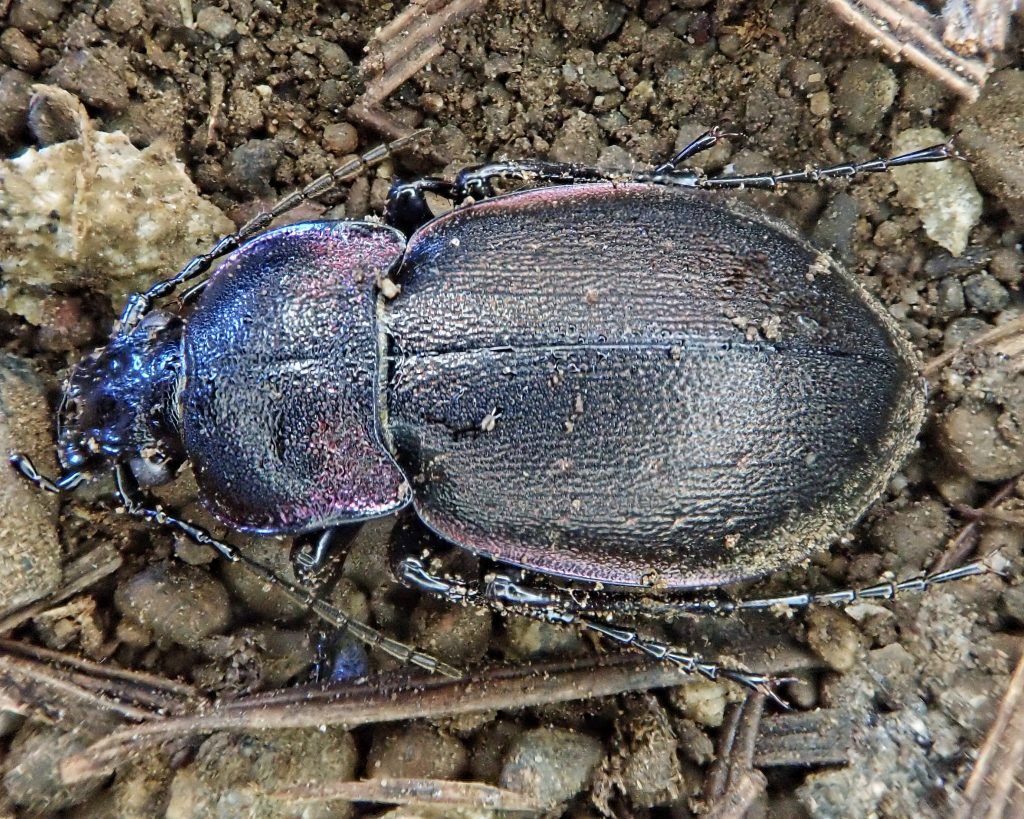
Eats-Larvae prey on Lepidoptera caterpillars; adults prey on soft bodied invertebrates like worms, slugs, grubs, spiders, and maggots, but will sometimes take adult arthropods, or even small reptiles.
Eaten by-Parasitized by Ophiocordyceps fungi, by mites, and by tachinid flies; does exude defensive chemicals from its pygidia, which probably lessens attack by vertebrates wishing to eat them whole, but doesn’t prevent frogs, toads, shrews, starlings, spiders from preying on them.
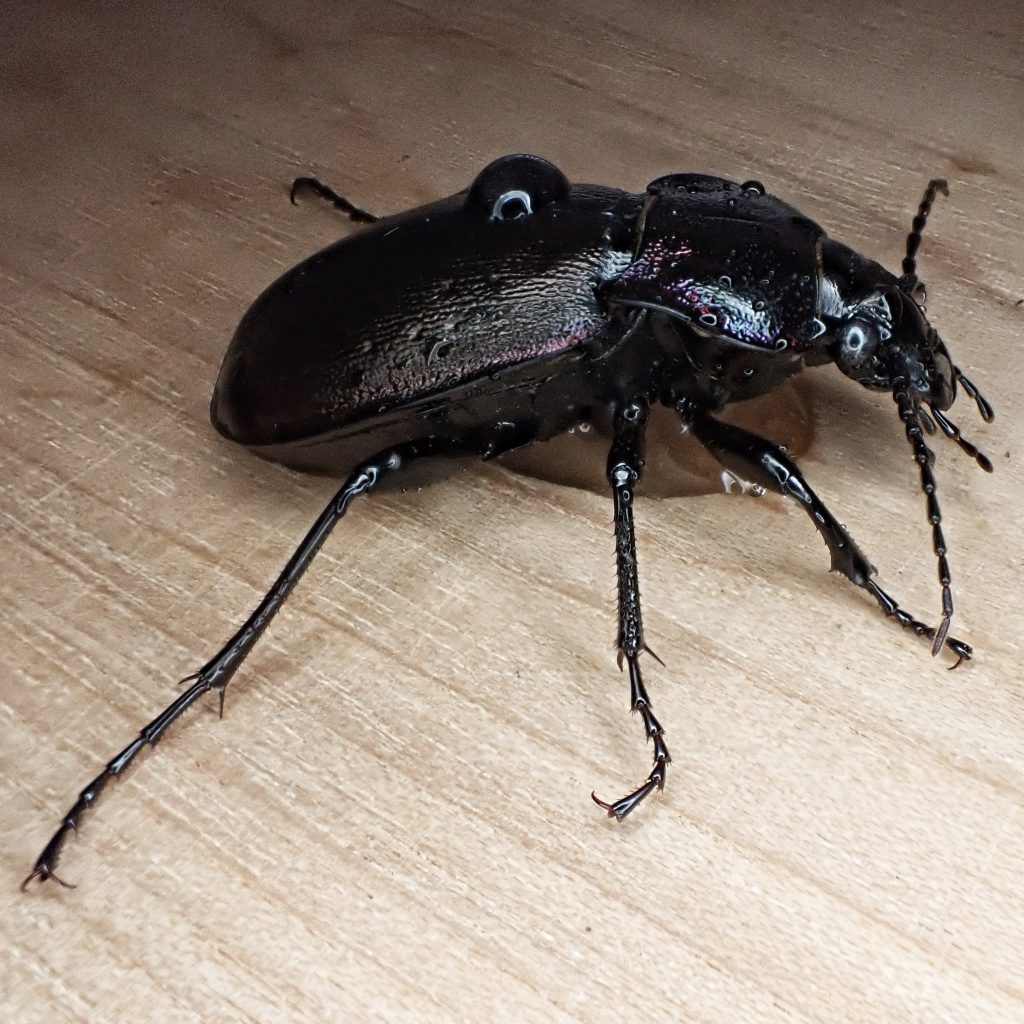
Reproduction-Mating occurs in the spring; female excavates a small hole and deposits a single egg inside; may lay up to 50 eggs per year; young hatch in April-May, and take about 90 days to reach maturity, with pupation happening in the ground; adults overwinter in deep cover; total life span may be 3 years.
Adults active-Nocturnal; year around but much less so during the coldest and warmest, driest periods.
Etymology of names–Carabus is from the Greek for ‘horned beetle’. The specific epithet nemoralis is from the Latin for ‘of a woods or grove’, referring to its habitat in its native land.
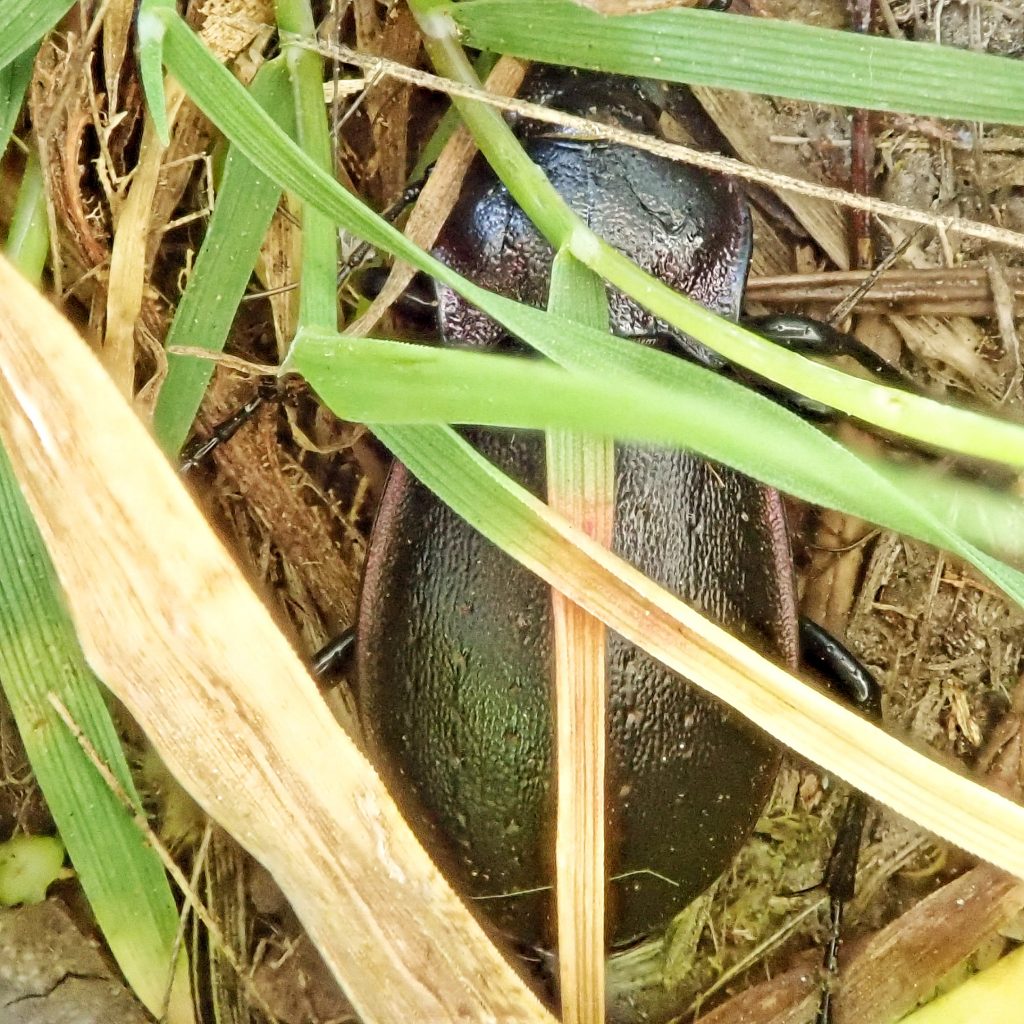
https://bugguide.net/node/view/13702
https://www.ukbeetles.co.uk/carabus-nemoralis
https://www.insectidentification.org/insect-description.php?identification=European-Ground-Beetle
http://www.habitas.org.uk/groundbeetles/species.asp?item=7137
https://wiki.bugwood.org/Carabus
https://www.jstor.org/stable/4009049
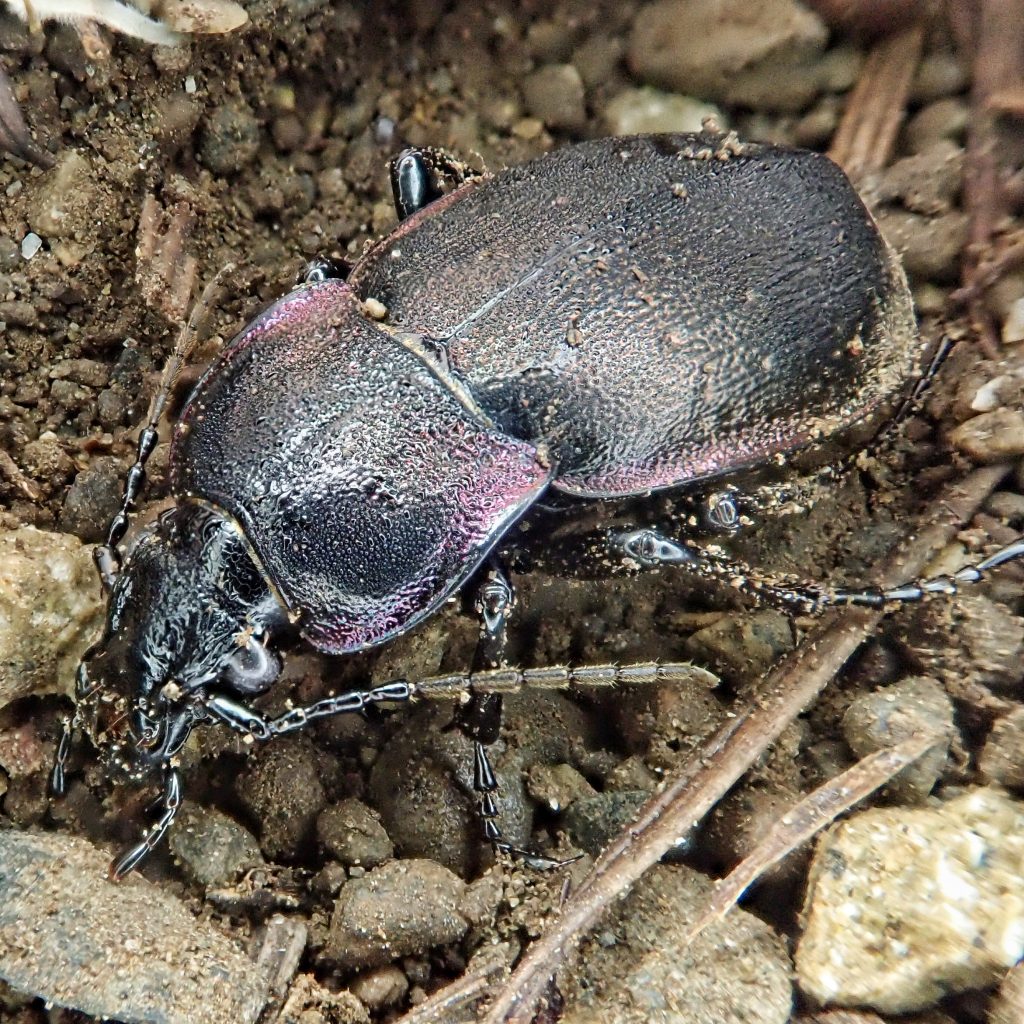
I noticed these only a decade ago…
But there are a series of garden related observations that predate the beetle. The locations are all across southern Alberta. Prior to 1967 I never saw the small European brown slug in any garden in Alberta, when they first appeared they were a novelty. By 1975 I noticed them frequently in significant numbers. Prior to 1977 I had never seen sowbugs in the prairie regions of Alberta, a few years on and they were pretty much ubiquitous throughout all the urban gardens that I knew. Scroll forward to 1998 and in walks C. nemoralis. Never saw it before that in Alberta, now it is everywhere, probably the most common Carabid here. I see less slugs, less earthworms, less sowbugs, and way less of the native beetles, lepidopterans, flies, and bugs that live on or in the ground. Hymenoptera seems unaffected… I thought you would enjoy those observations.
Yes I did, Peter! It does seem possible that the depletion of the slug and earthworm populations could be connected to the rise of Carabus nemoralis. The rest just seem to mirror the overall decline in arthropods that I’ve noticed personally, and heard about from others.